The fine systematics of the large (over 30 cm) black-striped Panaque is still only unsatisfactorily studied. Panaque nigrolineatus (L190) from Colombia and Venezuela is certainly the best known by name, and in 2020 a subspecies, usually rather spotted, was described from the upper Rio Guaviare in Colombia (P. n. laurafabianae, L330 see https://www.aquariumglaser.de/en/10-catfishes/l330-scientifically-described-panaque-nigrolineatus-laurafabianae/). Aquarists recognized early on (1989) that the black-striped Panaque from the large tributaries of the Amazon, namely Tapajós, Araguaia/Tocantins and Xingu, clearly differ in colour from the “true” P. nigrolineatus and designated them as L27.
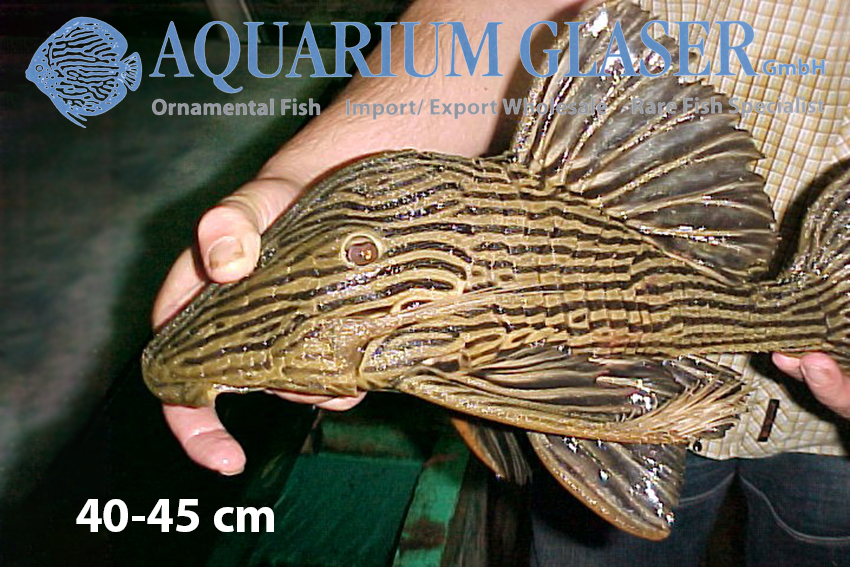
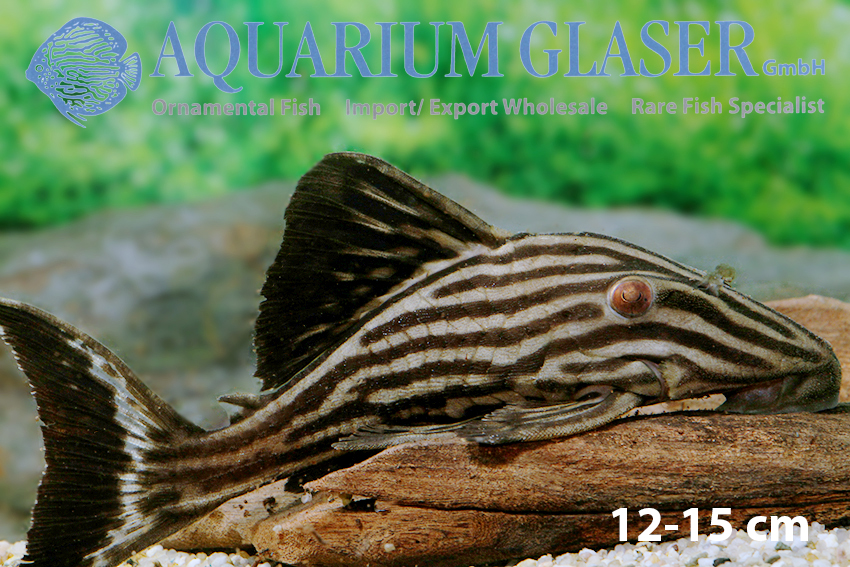
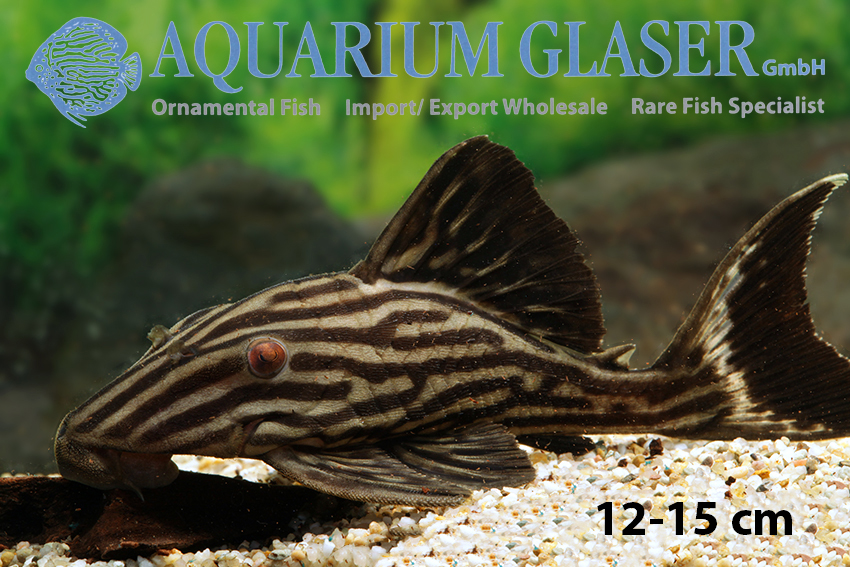
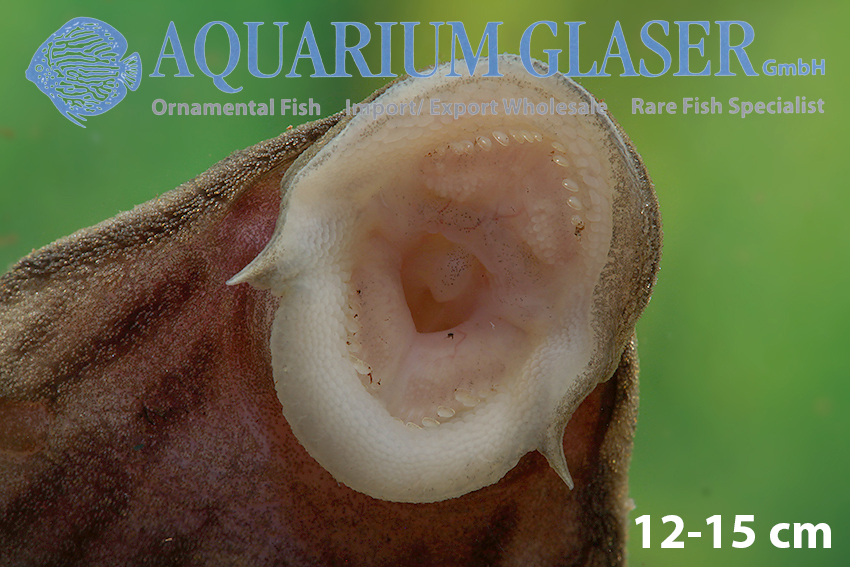
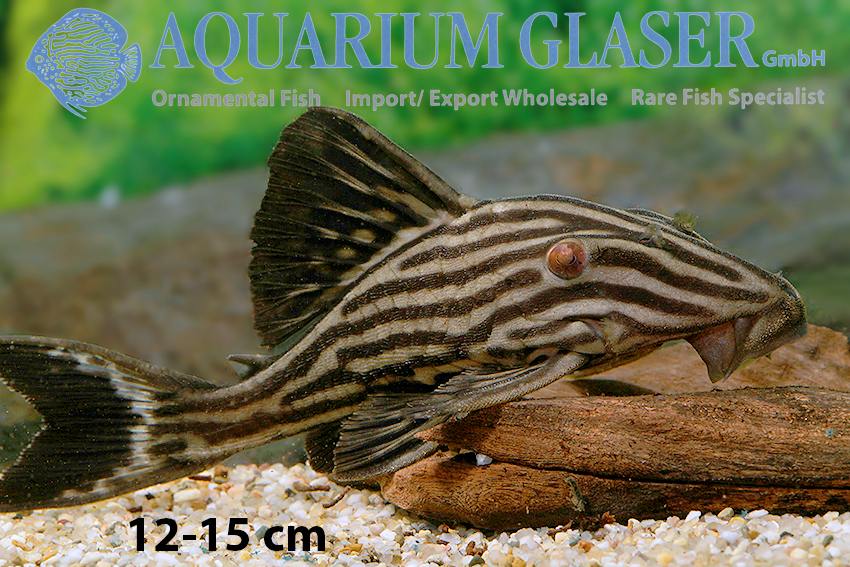
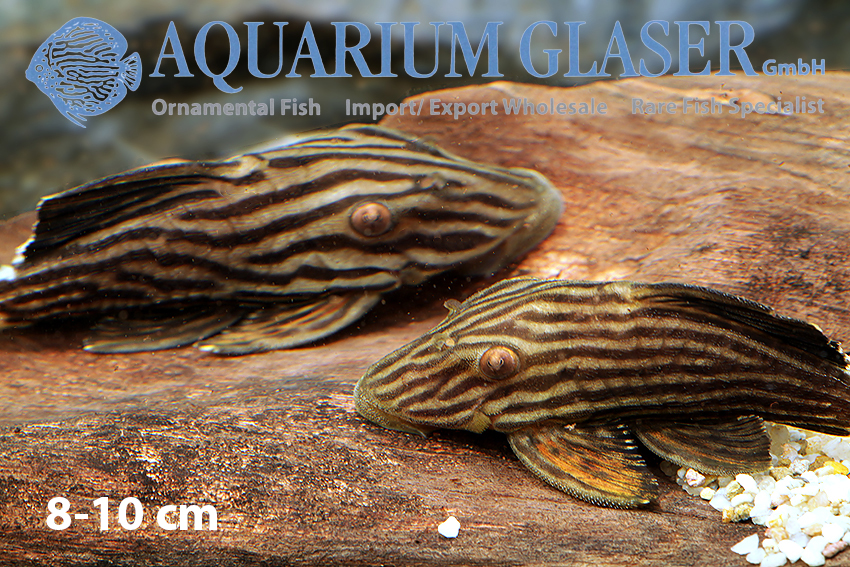
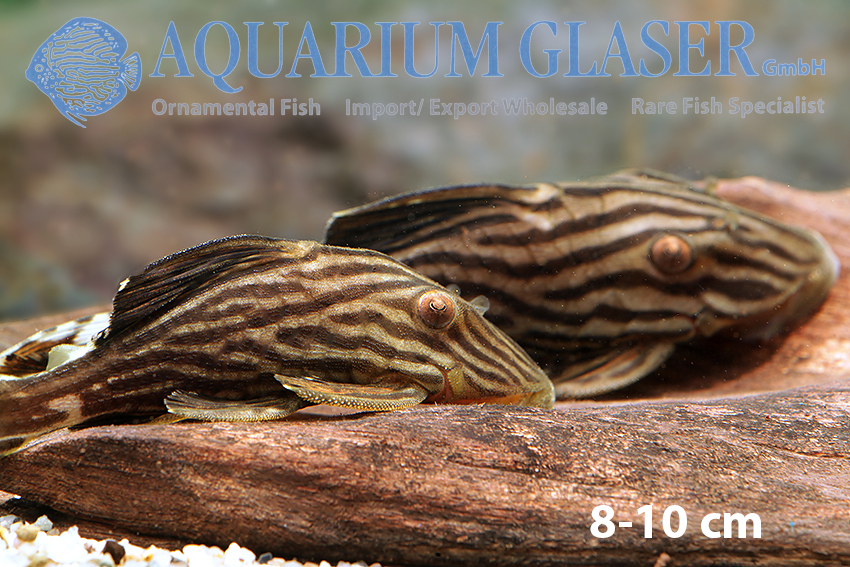
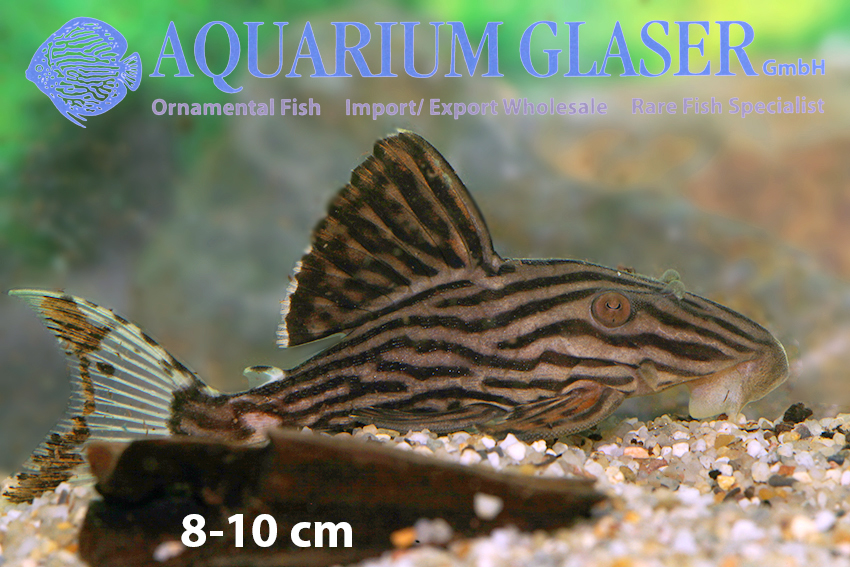
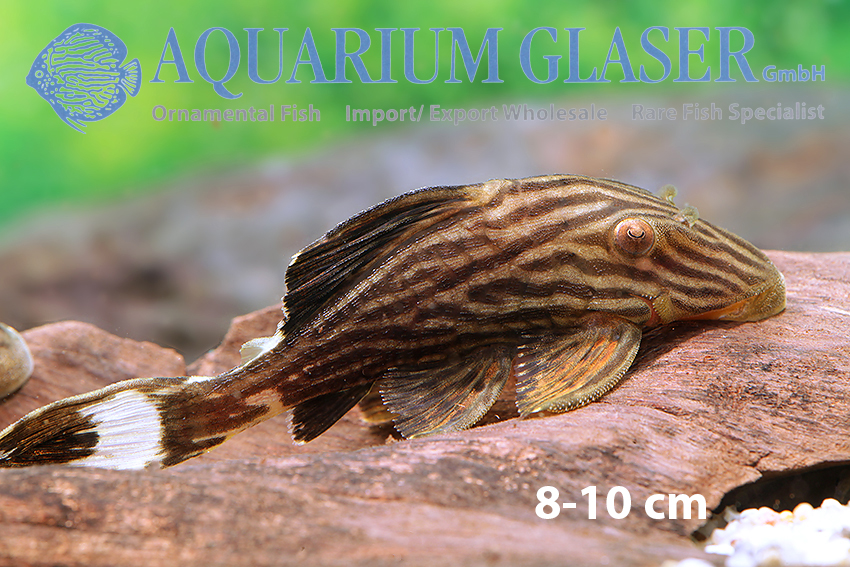
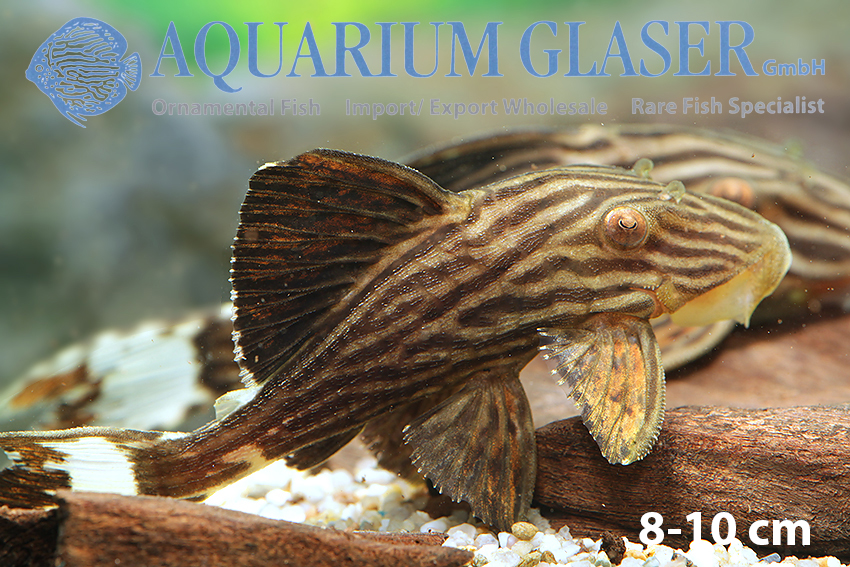
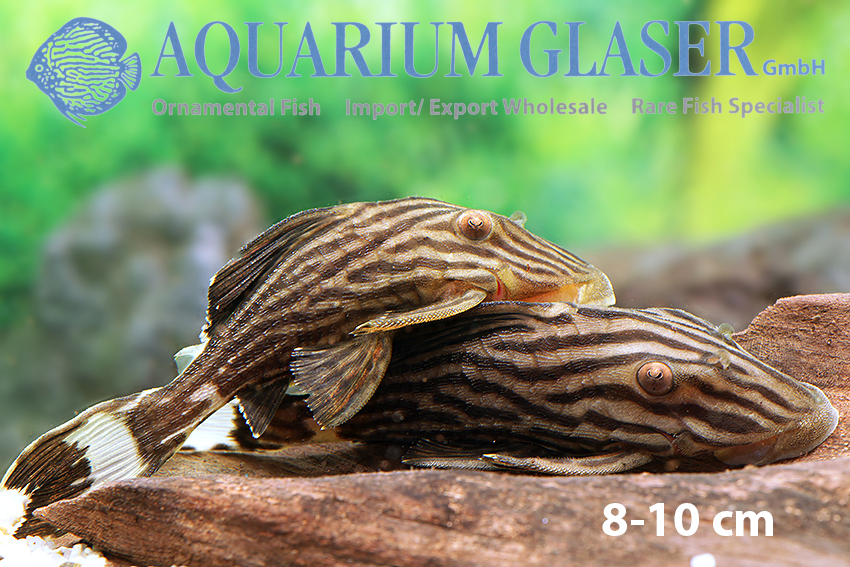
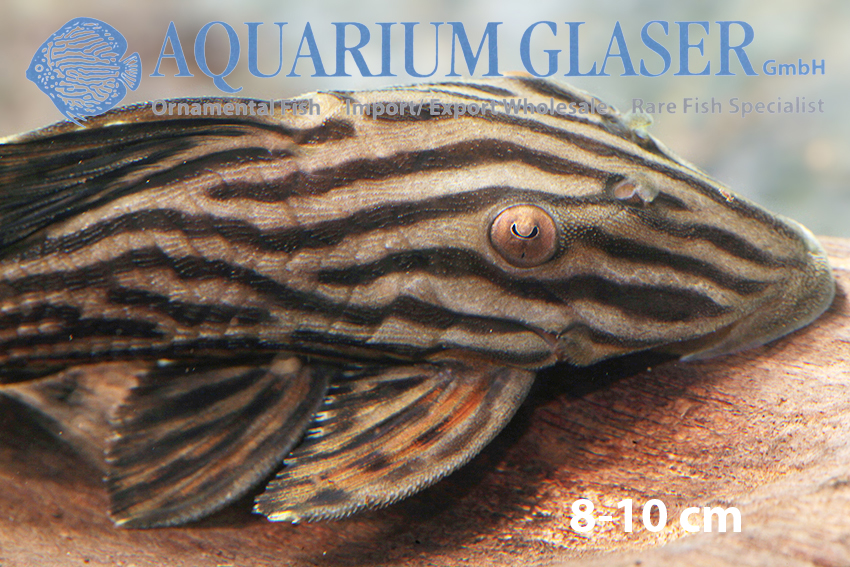
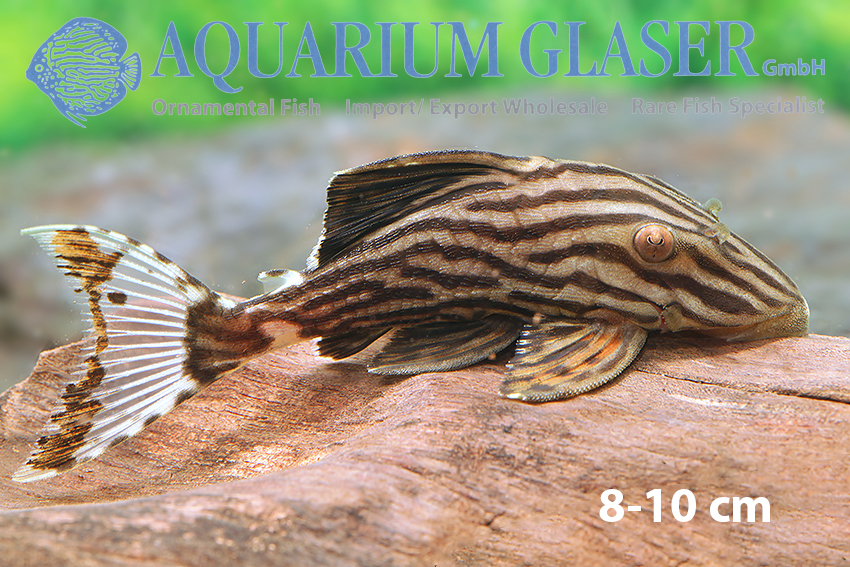
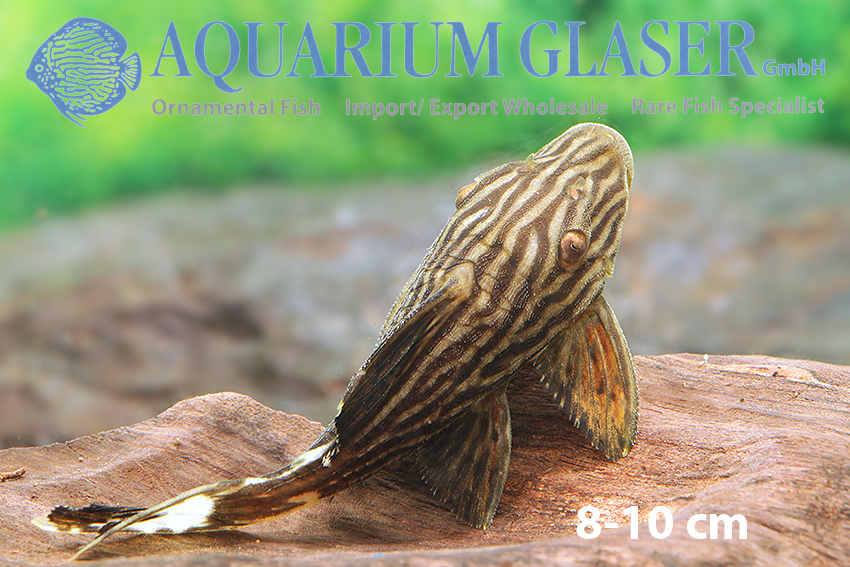
In 2010, one of these forms, namely the one from the Rio Tapajós basin, was scientifically described as Panaque armbrusteri. Unfortunately, the scientists apparently did not have any material from the Araguaia/Tocantins and the Xingu, they do not mention anything about it. These two populations can certainly be distinguished from the Tapajós population in terms of color, but it is questionable whether these differences are sufficient to establish independent species. For this reason, all panaques formerly grouped under L27 that do not come from the Tapajós are referred to as P. cf. armbrusteri. With the abbreviation “cf.” (this is Latin – confer – and means “compare with”) expresses that there is uncertainty as to whether the present animals are actually the same species as the described species, but that there is a very close resemblance.
We have just received very pretty L27s from the Xingu in two sizes, namely 8-10 cm and 12-15 cm. The smaller ones come in two colors, a somewhat finer striped one with reddish-brown, barely striped pectoral fins, and a broader striped one with striped pectoral fins. As they grow up, however, these differences in fin coloration disappear again, and in the 12-15 cm long animals there is nothing more to be seen, they all have striped fins. However, the individual differences in the striping of the body remain, in fact each animal has its own personal striping pattern. Fully grown animals, such as the 40 cm long male in one of the pictures in this post, have beautiful golden-black stripes.
Like all large panaque, these also need soft wood as a staple food, as well as vegetables of all kinds. Frozen, granulated and flake food, including food tablets, are readily accepted, but should only be given as supplementary food, not as the main food, in order to prevent fatty degeneration of the organs. Very (!) good filtration is important, the wood food is very low in nutrients, resulting in large quantities of excrement. Adult L27s can become incompatible with each other. Large aquaria in which the fish grow up together usually prevent serious conflicts. Nevertheless, males that are ready to spawn can, under certain circumstances, harass the weaker females to an extreme, which in extreme cases can lead to the death of the oppressed animal. Anyone deciding to keep a group of these magnificent catfish should therefore have alternative tanks to separate specimens in case incompatibilities are observed.
For our customers: the animals have code 26480-L 027-3 (8-10 cm) and 26480-L 027-5 (12-15 cm) on our stocklist. Please note that we only supply the wholesale trade.
Text & photos: Frank Schäfer




